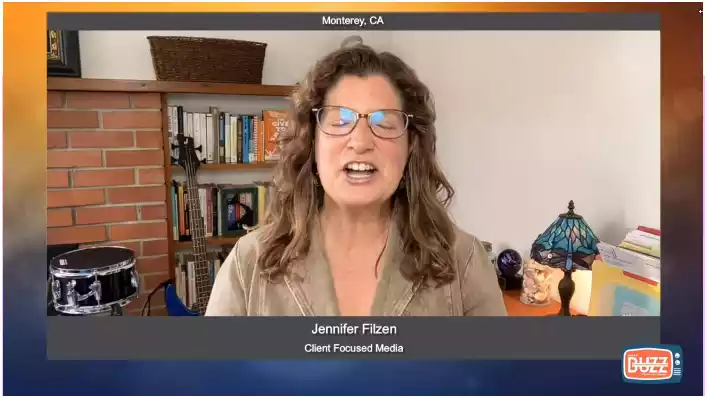Empowering Patients: Navigating the Complex World of Prior Authorization
Discover simple ways to navigate the complex world of prior authorization and improve patient care. Learn how to streamline this challenging process.

You might be asking, what does getting prior authorization mean? It refers to the process where your healthcare provider must obtain approval from your insurance company before certain treatments, procedures, or medications are covered. This ensures that the recommended service is medically necessary and aligns with the insurance plan’s guidelines. Without prior authorization, your insurance may deny coverage, leaving you responsible for the cost. It’s an important step to confirm that the care you need will be paid for by your insurer.
Let’s break it down!
Table of Contents
Navigating the Complex World of Prior Authorization

What is Prior Authorization?
Prior authorization (PA), sometimes called pre-authorization or pre-certification, is a requirement set by insurance companies whereby approval is needed before a patient can receive certain medical services or medications. The objective is to control costs and ensure the prescribed treatment is medically necessary. This process often involves the healthcare provider submitting a request to the insurance company, detailing why the service or medication is required for the patient.
The Importance of Prior Authorization
While prior authorization can be seen as a bureaucratic hurdle, it plays a crucial role in the healthcare industry. It helps prevent instances of overuse or misuse of medical services and ensures that patients receive the most appropriate care. Insurance companies can manage healthcare costs by requiring a thorough review before approving expensive treatments or medications.
The Challenges of Prior Authorization
However, the prior authorization process has its challenges. For patients and providers, it can be time-consuming and frustrating. The submission of documentation, the waiting period for approval, and potential denials can delay care and adversely affect patient health outcomes. Certain medications or treatments may require multiple submissions or appeals, increasing the burden on healthcare providers and their administrative staff.
Steps to Navigate Prior Authorization
- Understanding Your Insurance Policy: The first step in navigating prior authorization is understanding your insurance policy’s specific requirements and guidelines. Insurance plans vary, and what may be covered under one plan may not be covered under another. Patients should thoroughly review their policy documents or contact their insurance provider to clarify coverage details.
- Communicating with Healthcare Providers: Effective communication between patients and healthcare providers is essential. Patients should inform their providers about their insurance requirements, and providers should be proactive in explaining the necessity of the requested procedure or medication. Clear documentation and a comprehensive explanation can significantly increase the chances of a successful prior authorization request.
- Timely Submissions: Early and timely submission of prior authorization requests can prevent treatment delays. Patients and providers should work together to ensure that all necessary documentation is submitted as promptly as possible.
- Follow-Up: Regular follow-up with the insurance company and healthcare provider can expedite the prior authorization process. Patients should be quick to ask for updates and clarifications regarding the status of their authorization request.
- Appeals Process: Patients can appeal a denied prior authorization request. Understanding the appeals process and gathering supporting documentation can help overturn denials and secure the necessary care.
Tips for Empowering Patients
To better manage the complexities of prior authorization, patients can adopt the following strategies:
-
- Educate Yourself: Patients should educate themselves about the prior authorization process, available resources, and their rights. Knowledge is power and can help patients become better advocates for their care.
- Stay Organized: Keeping meticulous records of all communications, submissions, and responses regarding prior authorization can streamline the process and provide a clear paper trail in case of disputes.
- Seek Support: Patients should seek support from advocacy groups, healthcare providers, and insurance case managers who can offer guidance and assistance through prior authorization.
- Be Persistent: Persistence is key. Patients should remain proactive and persistent when dealing with prior authorization requests, following up regularly and appealing denials when necessary.
I'm very thankful for Portiva who I know is looking after my practice while I'm gone the virtual assistants can manage prescription refills, documents they can triage patients and just kind of answer administrative questions and they can handle a lot on their own. But also, they're very good about contacting me if there's any emergency or anything I need to attend to. So I'm very thankful for Portiva they can help almost any provider almost anywhere and it really allows for some good work-life balance as I'm getting to experience right now at my family farm so I'm very thankful for Portiva and I'm very happy to use their services"

Board Certified Family Medicine Physician

Portiva's Virtual Medical Assistant - I have all the support I need. There's somebody checking my email, any patient messages. Patients are still able to schedule and handle any scheduling issues and any kind of billing that needs to still go through. Portiva hands handles it all for me. I have support i have somebody that I can access 24/7 pretty much. It's all very seamless. If somebody has an emergency or needs a medication called in. I know that the va's at portiva will handle that for me.

Board Certified Family Medicine Physician

The Role of Healthcare Providers

- Being Proactive: Anticipating which treatments will require prior authorization and preparing the necessary documentation can expedite the authorization procedure.
- Clear Communication: Clear and transparent communication with patients about the prior authorization process, potential delays, and alternative options can help manage expectations and reduce anxiety.
- Advocacy: Providers should advocate on behalf of their patients, particularly in cases where prior authorization requests are initially denied. Submitting appeals with comprehensive medical justifications can often result in reversals of denials.
The Future of Prior Authorization
The healthcare industry continuously evolves, and policy, technology, and practice changes can impact the prior authorization process. Patients and providers must stay informed about these changes and adapt accordingly. In recent years, there have been calls for reform to streamline prior authorization and reduce its administrative burden. Legislative efforts, such as the “Improving Seniors’ Timely Access to Care Act,” aim to create standardized and simplified processes for prior authorization within Medicare Advantage plans. If enacted, such reforms could serve as a model for broader changes across the insurance industry.
Conclusion
Understanding and navigating the prior authorization process is essential for patients seeking timely and adequate medical care. Patients can direct their medical care by educating themselves, communicating effectively with healthcare providers, and staying organized. Likewise, healthcare providers can support their patients by being proactive, advocating, and staying abreast of policy changes. Together, patients and providers can work towards a more streamlined and efficient prior authorization process, ultimately improving patient happiness and health outcomes. The secret is empowerment via advocacy and information to navigate the complex world of prior authorization. So, patients and providers must work together toward finding the best solutions for prior authorization challenges. With continued efforts towards reform and collaboration, we can create a more efficient and patient-centric system that puts the well-being of individuals first. Navigating prior authorization may be challenging, but it is not impossible with proper understanding, communication, and persistence.
To learn more about coverage determination that can enhance your medical practice. Discover more about Portiva and unlock a world of possibilities by visiting our homepage today!
- Prior authorization unveiled
- Practices for streamlining prior authorization
- Roadmap to understanding prior authorization
- Advocating patient safety with precertification services
- Outsourcing for prior authorization success
- Patient access and prior authorization
- Prior authorization costs impact healthcare access
- Making prior authorization more efficient
- Fair prior authorization practices
- Engaging patients in prior authorization
- Streamlining prior authorization procedures
- Providers vs. payers in prior authorization
- Mastering prior authorization
- Comprehensive prior authorization training
- Optimize prior authorization journey
- Providers and payers in prior authorization
- Operational excellence in prior authorization
- Demystifying prior authorization
- Complex world of prior authorization


